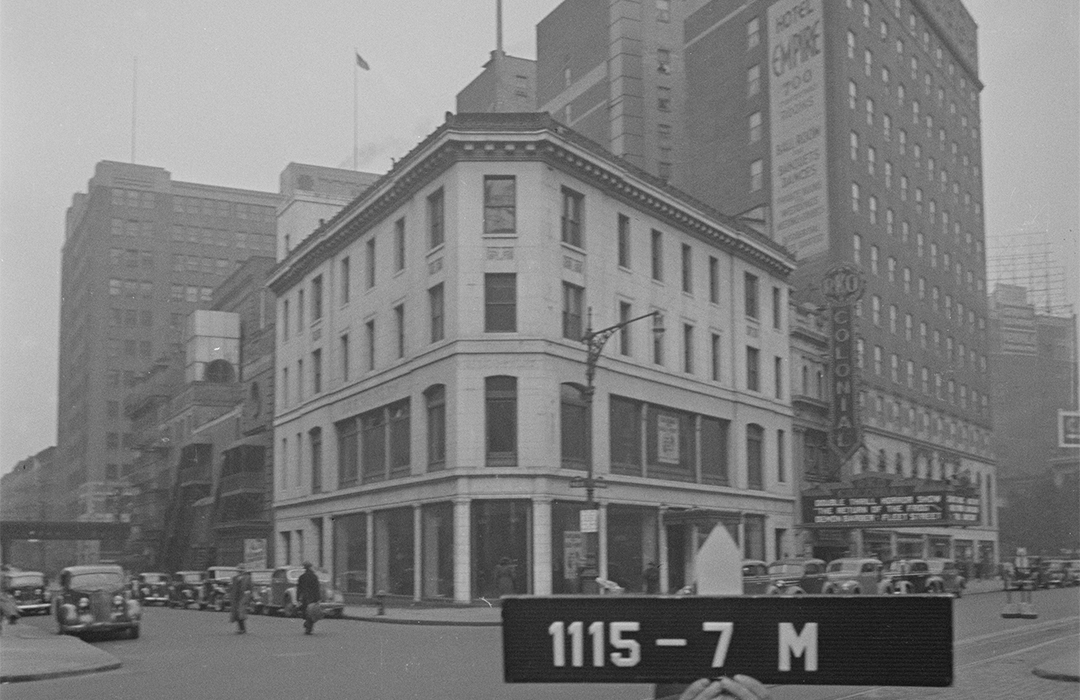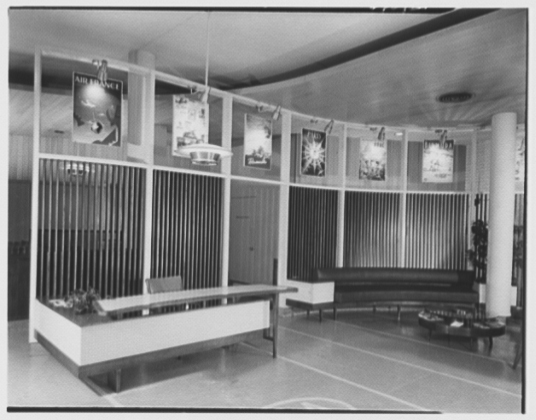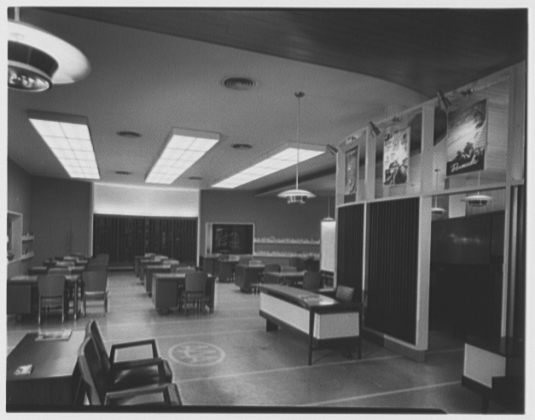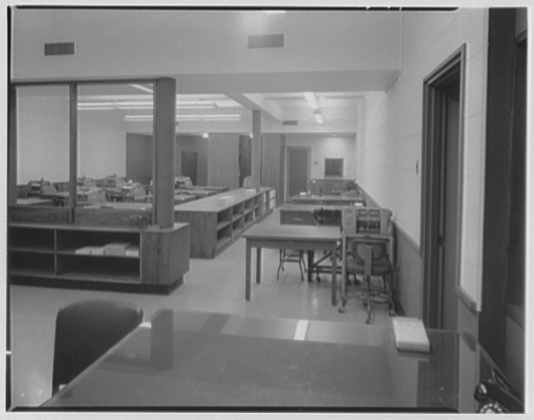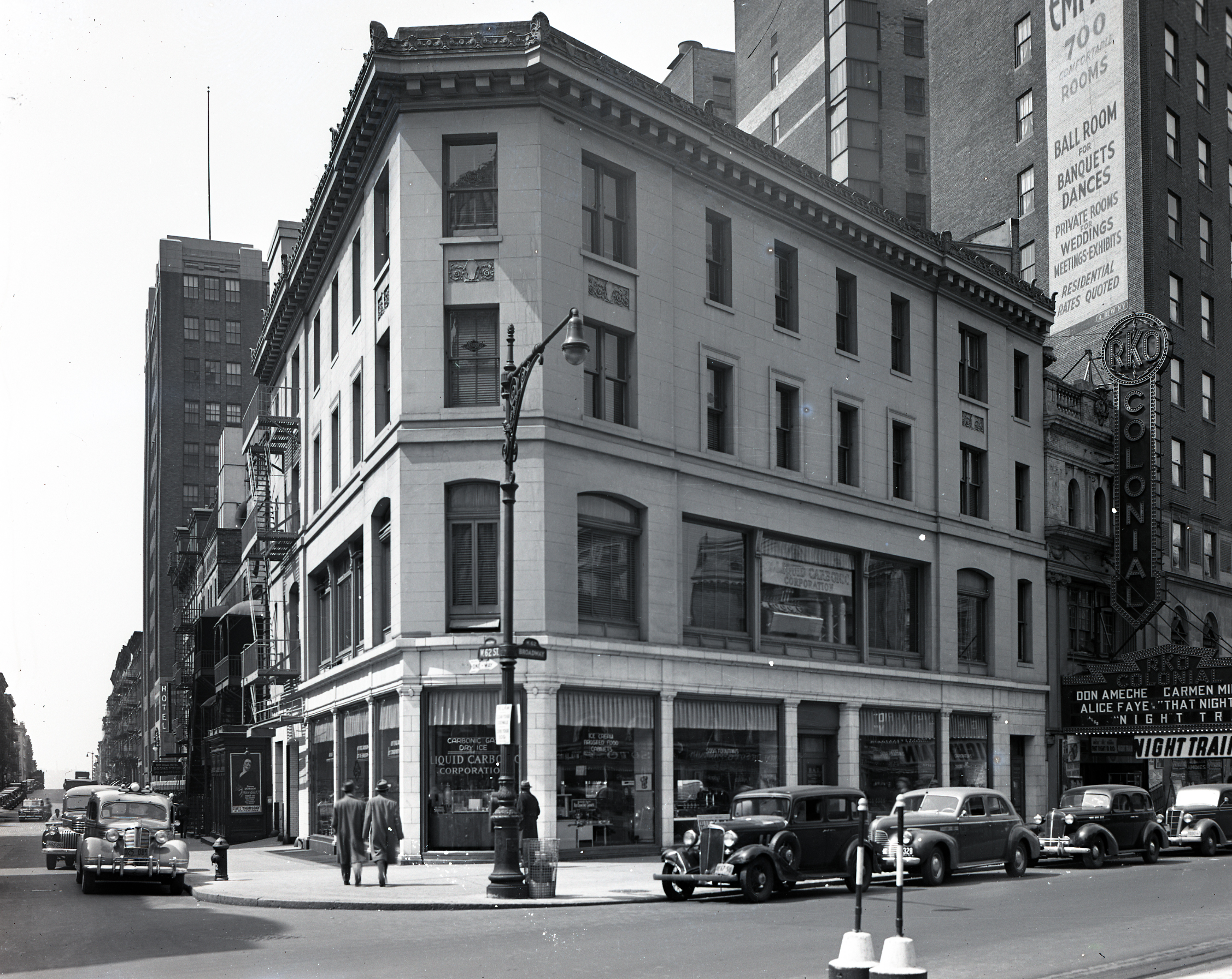
The Panhard & Levassor Showroom
by Tom Miller
On December 1, 1903, Panhard & Levassor, the Paris manufacturer of luxury automobiles and motorboats, opened an American Branch at 230-232 West 13th Street. The Automobile Magazine was pleased that the firm now had its own office here. In its January 1904 issue, it accused American dealers who sold parts for or repaired the French vehicles as making “dear Americans…pay through the nose.” The venture proved successful and in 1905 Panhard & Levassor sought to join other automobile dealers and showrooms on Broadway, along what was rapidly becoming known as “Automobile Row.”
In July 1905 architect Henry C. Hollwedel filed plans for a three-story “automobile garage” to be erected at the northwest corner of Broadway and 62nd Street for the Wendell estate. The Wendell family had been major property owners and real estate developers in Manhattan for more than half a century, and Hollwedel had been the estate’s exclusive architect for nine years. He designed this building with its future occupant, Panhard & Levassor, in mind. It appears that the automobile firm had negotiated a new building into the purchase price of the property from the Wendell estate. The limestone-fronted structure was completed in 1906 at a cost of $80,000—around $2.5 million in 2022 terms.
Cars seen at the Broadway showroom were samples, as Panhard & Levassor continued constructing its automobiles in France.
Hollwedel’s no-nonsense, tri-partite design featured vast show windows on the ground and second floors to showcase the automobiles. No doubt due to the triangular plot, due to the angle of Broadway, the architect chamfered the corner. The two-story top section was nearly bereft of decoration, and a bracketed cornice crowned the structure.
The building housed showrooms and offices. Cars seen at the Broadway showroom were samples, as Panhard & Levassor continued constructing its automobiles in France. Models not on display could be chosen from “catalogues giving exact reproductions of cars,” said a 1907 advertisement. It explained, “Special arrangements have been made to have the cars ordered meet our patrons at the ports on arrivals of steamers.”
The makers remained in the building through 1912. In December of that year Panhard & Levassor sold the property to the Detroit Cadillac Motor Car Co. to be used for “the sale of Cadillac cars in the metropolitan district,” according to the Real Estate Record & Guide on December 14. The journal called the sale “another instance of the investment by a manufacturing automobile concern in real estate in the automobile section.”
As Panhard & Levassor had done, Cadillac filled the first and second floors with shiny, new vehicles that caught the attention of passersby. An advertisement in November 1922 listed automobiles ranging from a Touring Car at $2,885 to an Imperial Limousine at $4,400. The price tags would range from $46,600 to $71,000 in today’s money.
The organization hired the esteemed architectural and design firm of Von der Lancken & Lundquist to remodel the building.
In 1941 the Cadillac Corporation leased the building to the Liquid Carbonic Corporation, which converted it to offices throughout. Exactly one decade later, on October 17, 1951, 1881-1885 Broadway was purchased by the American Automobile Association or AAA. The organization hired the esteemed architectural and design firm of Von der Lancken & Lundquist to remodel the building. The designers transformed Hollwedel’s turn-of-the-century showroom-garage into a chic mid-century office building.
As the years passed, the showrooms and supply stores that had made up Automobile Row gradually gave way to restaurants and retail stores. Writing in The New York Times on July 7, 2000, David W. Dunlap commented, “This Triple A branch on the northwest corner of 62nd Street may be the last functioning vestige of Automobile Row.”
Then, in 2010, a permit for “interior and façade demolition” was granted to the AAA’s architects. The resultant mutilation of the exterior smacks of a Soviet period bunker. One might have wished better for the historic, pie-shaped structure.
Tom Miller is a social historian and blogger at daytoninmanhattan.blogspot.com
Keep the spirit of San Juan Hill alive! Support these local businesses at 1881 Broadway:

